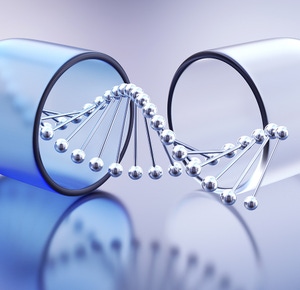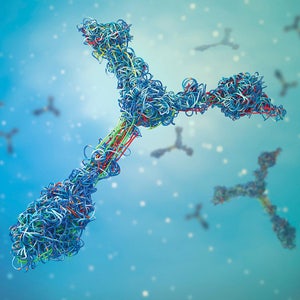

HTRF Human Phospho-MLKL (Ser358) Detection Kit, 10,000 Assay Points


HTRF Human Phospho-MLKL (Ser358) Detection Kit, 10,000 Assay Points






This HTRF kit enables the cell-based quantitative detection of phosphorylated MLKL at Ser358 as a readout of the programmed necrotic cell death pathway, also called necroptosis.
| Feature | Specification |
|---|---|
| Application | Cell Signaling |
| Sample Volume | 16 µL |
This HTRF kit enables the cell-based quantitative detection of phosphorylated MLKL at Ser358 as a readout of the programmed necrotic cell death pathway, also called necroptosis.



HTRF Human Phospho-MLKL (Ser358) Detection Kit, 10,000 Assay Points



HTRF Human Phospho-MLKL (Ser358) Detection Kit, 10,000 Assay Points



Product information
Overview
This HTRF cell-based assay conveniently and accurately detects phosphorylated MLKL at Ser358.
MLKL (Mixed lineage kinase domain-like protein) is a key mediator of apoptotic and necrotic cell death, as well as of inflammatory pathways downstream from TNFR1 and other receptors. MLKL is phosphorylated at Serine 358 by RIPK3, and is considered to be a biomarker of the initiation of RIPK1/RIPK3-dependent necroptosis.
Necroptosis is a programmed necrotic cell death pathway, also called "inflammatory cell death", which is closely associated with pathologies including inflammatory and neurodegenerative diseases, as well as cancer. MLKL has therefore become an important drug target for the pharmaceutical industry. Therapeutic strategies consist in developing specific small-molecule kinase inhibitors, such as the well-known Necrostatin-1 and Necrostatin-1s.
Specifications
| Application |
Cell Signaling
|
|---|---|
| Automation Compatible |
Yes
|
| Brand |
HTRF
|
| Detection Modality |
HTRF
|
| Lysis Buffer Compatibility |
Lysis Buffer 1
Lysis Buffer 2
Lysis Buffer 4
|
| Molecular Modification |
Phosphorylation
|
| Product Group |
Kit
|
| Sample Volume |
16 µL
|
| Shipping Conditions |
Shipped in Dry Ice
|
| Target Class |
Phosphoproteins
|
| Target Species |
Human
|
| Technology |
TR-FRET
|
| Therapeutic Area |
Inflammation
Neuroscience
Oncology & Inflammation
|
| Unit Size |
10,000 assay points
|
Video gallery

HTRF Human Phospho-MLKL (Ser358) Detection Kit, 10,000 Assay Points

HTRF Human Phospho-MLKL (Ser358) Detection Kit, 10,000 Assay Points

How it works
Phospho-MLKL (Ser358) assay principle
The Phospho-MLKL (Ser358) assay measures MLKL when phosphorylated at Ser358. Unlike Western Blot, the assay is entirely plate-based and does not require gels, electrophoresis, or transfer. The assay uses 2 antibodies, one labeled with a donor fluorophore and the other with an acceptor. The first antibody is selected for its specific binding to the phosphorylated motif on the protein, the second for its ability to recognize the protein independently of its phosphorylation state. Protein phosphorylation enables an immune-complex formation involving both labeled antibodies, and which brings the donor fluorophore into close proximity to the acceptor, thereby generating a FRET signal. Its intensity is directly proportional to the concentration of phosphorylated protein present in the sample, and provides a means of assessing the protein's phosphorylation state under a no-wash assay format.

Phospho-MLKL (Ser358) two-plate assay protocol
The two-plate protocol involves culturing cells in a 96-well plate before lysis, then transferring lysates into a 384-well low volume detection plate before the addition of Phospho-MLKL (Ser358) HTRF detection reagents. This protocol enables the cells' viability and confluence to be monitored.

Phospho-MLKL (Ser358) one-plate assay protocol
Detection of Phosphorylated MLKL (Ser358) with HTRF reagents can be performed in a single plate used for culturing, stimulation, and lysis. No washing steps are required. This HTS designed protocol enables miniaturization while maintaining robust HTRF quality.

Assay validation
MLKL activation in TNFa stimulated HT-29 cells
The human colorectal cancer cell line HT-29 was seeded in a 96-well culture-treated plate under 200,000 cells/well in complete culture medium, and incubated overnight at 37 °C, 5% CO2. For MLKL activation experiments, the cells were pre-treated with 25 µM Z-VAD (pan-caspase inhibitor) for 30 minutes before the simultaneous addition of SM-164 (cIAP1/2 inhibitor) at 100 nM and human TNF-α at various concentrations for 6 hours. After treatment, the cells were lyzed with 50 µL of supplemented lysis buffer #4 for 30 minutes at RT under gentle shaking. For the detection step, 16 µL of cell lysate were transferred into a 384-well low volume white microplate and 4 µL of the HTRF Phospho-MLKL (Ser358) or Total-MLKL detection reagents were added. The HTRF signal was recorded after an overnight incubation.
In presence of SM-164 and Z-VAD, that block cell survival and apoptosis respectively, TNF-α induces a dose-dependent increase in MLKL phosphorylation at Ser358, highlighting the activation of the necroptosis pathway. Total MLKL show unchanged levels of signal, demonstrating that the modulations observed on Phospho-MLKL is induced by the pharmacological treatments, and is not caused by cell detachment that can happen during late stages of necroptosis.

Prevention of necroptosis activation in HT-29 cells using necroptosis inhibitors
The human colorectal cancer cell line HT-29 was seeded in a 96-well culture-treated plate under 200,000 cells/well in complete culture medium, and incubated overnight at 37 °C, 5% CO2. The cells were pre-treated with 25 µM Z-VAD for 20 minutes before the addition of increasing doses of Necrostatin-1s or Necrostatin-1. After 10 additional minutes, a pre-mix containing 100 ng/mL TNF-α and 100 nM SM-164 was added for 6h. After treatment, the cells were lyzed with 50 µL of supplemented lysis buffer #4 for 30 minutes at RT under gentle shaking. For the detection step, 16 µL of cell lysate were transferred into a 384-well low volume white microplate, and 4 µL of the HTRF Phospho-MLK (Ser358) or Total-MLKL detection reagents were added. The HTRF signal was recorded after an overnight incubation.
The necroptosis inhibitor Necrostatin-1 and its analog Necrostatin-1s both induce a dose-dependent decrease in MLKL phosphorylation at Ser358, while total MLKL remain stable. As expected, Necrostatin-1s is more potent than the original small molecule, based on the IC50 values obtained on Phospho-MLKL that are ~ 2 times better than with Necrostatin-1.


HTRF Phospho-MLKL (S358) assay compared to Western Blot
The human colorectal cancer cell line HT-29 was cultured in a T175 flask in complete culture medium for 48h at 37°C, 5% CO2. The cells were pre-treated with 25 µM Z-VAD for 30 minutes before the simultaneous addition of SM-164 at 100 nM and human TNF-α at 100 ng/mL for 6 hours. After treatment, the cells were lyzed with 3 mL of supplemented lysis buffer #4 for 30 minutes at RT under gentle shaking.
Serial dilutions of the cell lysate were performed using supplemented lysis buffer, and 16 µL of each dilution were transferred into a low volume white microplate before the addition of 4 µL of HTRF phospho-MLKL (Ser166) detection reagents. Equal amounts of lysates were used for a side-by-side comparison between HTRF and Western Blot.
Using the HTRF phospho-MLKL (Ser358) assay, 8,125 cells/well were enough to detect a significant signal, while 65,000 cells were needed to obtain a minimal chemiluminescent signal using Western Blot. Therefore, in these conditions, the HTRF phospho-MLKL assay was 8 times more sensitive than the Western Blot technique.

Simplified pathway
MLKL signaling pathway
MLKL plays key role in TNF-a induced necroptosis, programmed cell death process.
Upon binding of TNF-α to TNFR1, the receptor triggers the rapid formation of complex I at the cytoplasmic membrane by recruiting multiple proteins, including RIPK1, TRADD, TRAF2, and the cellular inhibitors of apoptosis 1 and 2 (cIAP1/2). cIAP1/2 catalyze the polyubiquitination of RIPK1, leading to the recruitment of IKKα and IKKβ and the activation of the NF-κB pro-survival pathway.
In the absence of cIAP1/2, RIPK1 is released from TNFR1 and associates with FADD and caspase 8 to form the cytosolic complex IIa, responsible for caspase 8-dependent cell apoptosis.
When caspase 8 activity is inhibited or under pathological conditions, MLKL interacts with RIPK1 and RIPK3 to form the cytosolic complex IIb (also called 'necrosome') which is involved in the initiation of necroptosis. Following RIPK1 autophosphorylation MLKL is phosphorylated by RIPK3 at Ser358 leading to its oligomerization, localization to the plasma membrane and execution of programmed necrosis characterized by calcium influx and plasma membrane damage . DAMPs are then released to promote damage repairs.

Resources
Are you looking for resources, click on the resource type to explore further.
This guide provides you an overview of HTRF applications in several therapeutic areas.
Loading...


How can we help you?
We are here to answer your questions.








































